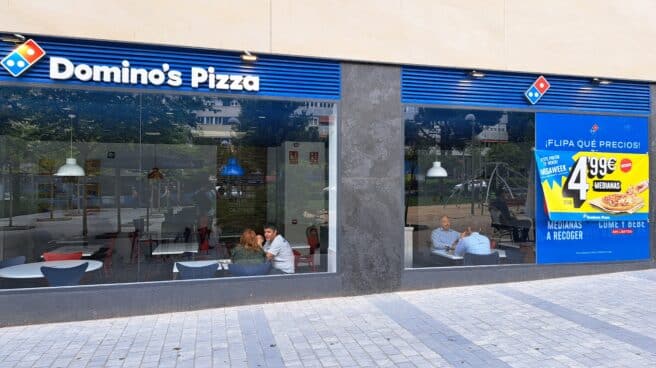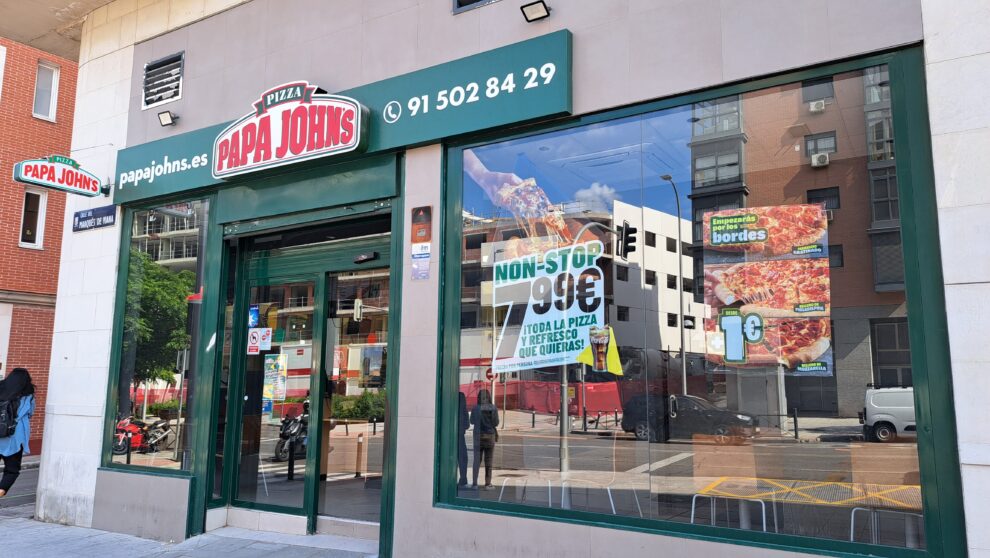

One of the last Domino’s Pizzas in Madrid.
“70% Deal”, “Non-stop 7.99 euros” or “Megaweek” with a medium-sized pizza for 4.99 euros. The traditional advertising policy of pizza chains multiplies in times of inflation. Premises telepizza, Dominoes And Papa Johns they address customer acquisition in the context of loss of purchasing power and reduced consumer spending. And also in an increasingly competitive environment, with a dance of openings and closings; an unprecedented expansion of home delivery of food through services such as Glovo or Just Eat; and the booming artisan pizzeria segment.
Born in the 1990s, historic operator Telepizza has had to compete with expansion plans from two of its main competitors for some time now. Though after an expansion plan that left him on the brink, he is now trying to get back on track after his recent departure. KKR fund and the transfer of control over the company to a part of the creditors with whom she agreed a month ago on refinancing your debt. Parent food delivery brands have delayed reporting results until July.
At the moment, the company has been pursuing an aggressive advertising policy since the beginning of May every day of the week in which it offers two medium pizzas with two toppings through any of its online channels at a 70% discount.
For its part, Domino’s Pizza, an American brand operated in Spain by Mexican giant Alsea (Vips, Starbucks, Foster’s Hollywood…) also launched various promotions. The latter offers a medium-sized pizza for the week from €4.99 to take away or borrow one of their premises.
The company ended 2022 with nearly 400 stores after opening 17 new stores last year. Twelve of them are owned and the rest are franchised. Since 2019 added 57 restaurants and the company does not intend to stop its growth. The company wants have a presence in everything in places where it is not yet available, with a focus on populations between 10,000 and 30,000 inhabitants, and offers franchisee benefits so they can transform their traditional pizzeria and join the brand.
Fewer stores are at Papa John’s, an American-born chain operated by a Chilean parent company in Spain. Services Drake Foods. Since entering the Spanish market in 2016, the company has also tried to win market share from its competitors through promotions.

Right now it offers an unlimited menu for 7.99 euros or an offer of three medium pizzas for 7 euros each. The goal of the company, chaired by the “former” Telepizza, Fernando Frauka, by 2025 will have up to 300 stores, both own and sub-franchised through partners. And it even made its way into the business of “ghost” kitchens or dark kitchen.
More shares and less expenses
In general, consumption in the so-called organized catering (that is, in large chains that include many fast foods) recovered in 2022 after the start of the pandemic. Right now operators don’t want to answer whether demand is shrinking.
In general, branded catering plans to grow in 2023 in terms of turnover, network of establishments and staff, despite the current context of uncertainty with consumption. This is reflected in 2022 Brand Recovery Observatory, Prepared by employers Marcas de Restauracion, The NPD Group and KPMG in Spain.
Through August 2022, branded restaurants accounted for 29.7% of total restaurant spending, up five points from 2019. And companies like pizza chains are trying to adapt to new trends and fish for consumers who are trying to adjust their spending on eating out.
According to the aforementioned report, “consumers are already applying various adjustments today that determine trade down: redistribute consumption across channels (e.g. from independent full-service a la carte restaurants to others with lower fares), order smaller and allow yourself to be more attractive and attractive to promotions and closed menus.
“The recovery process of recovery, however, is threatened by the risk of reduced demand associated with the impact of inflation on households. Not surprisingly, consumers are seeing a decline in their purchasing power, they are more sensitive to prices and promotions, they are changing their habits, and they are forcibly limiting some spending, especially in non-essential activities.
Source: El Independiente